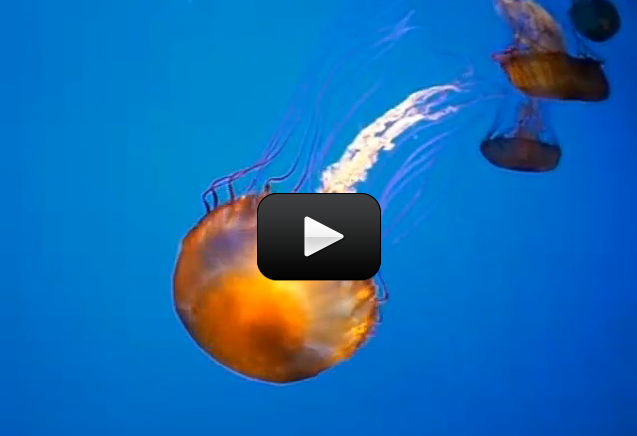Invertebrates are organisms without backbones. Let’s look at two very simple types of invertebrates; Sponges and Cnidarians. Sponges (Phylum Porifera), found in oceans all over the world, are made up of colonies of specialized cells—some help push water through the sponge, some help it feed, some are responsible for reproduction, etc.
They feed by filtering water through its pores. They have flagella on the inside that drive the water through and pick up particulates in the water. In this sense, they are known as sessile filter feeders. Sponges are attached to the ground below them—they are sessile (unable to move). However, sponges can move around at certain times in their lifespan.
Scientists use to think they were plants, but we know now that they are in fact animals. Besides their specialized cells, sponges do not have any organs, nerves, or even true tissues. They are held together through the cooperation of the colony.
Cnidarians (don’t pronounce the ‘c’, so it sounds more like “nay-DAR-ee-ons”) also are radially symmetrical. This means they have a circular body plan such that any way you cut them in half the sides will be equal. There are two basic body forms; polyp and medusa. The polyp is a cup-shaped body—with the mouth facing upward (sea anemones, for example). The medusa is bell-shaped and has a downward-facing mouth (jellyfish, for example). Some can even start in the medusa stage and then move into the hydra stage.
Painful stinging cells, called nematocysts, make the phylum Cnidaria especially notable. Jellyfish and sea anemones are just two examples of these painful creatures. The nematocysts are, in fact, long hollow threads that are used to trap prey. Additionally, these nematocysts are triggered externally, so even if you come across a dead jellyfish don’t step on it!
A Cnidarian with a polyp body plan, a sea anemone, and a Cnidarian with a medusa body plan, a jellyfish. Notice the upward facing mouth of the polyp, and the downward facing one of the jellyfish.
Cnidarians, unlike sponges, have true tissues. They digest their food in a gastrovascular cavity—a large cavity containing digestive enzymes. The digestive cavity also has circulatory functions. Cnidarians, like sponges, can form colonies. Colonies of polyps form the jellyfish the Portuguese Man-O-War. Similarly, colonies of cnidarians form on calcium carbonate skeletons to make coral reefs.


Sea angels do not have lungs. Some sea angels have a basic structure that appears similar to a gill. Actually, little is know about their respiration. Scientists believe that sea angels diffuse oxygen across the wall of their body.
i heard that the box jellyfish is the most dangerous creature on the planet is that true?
do they have gills or lungs to breath???????
Jellyfish don’t have brains they have a a basic set of nerves at the base of their tentacles. These nerves detect touch, temperature, salinity, etc. They don’t have hearts either! They circulate nutrients and gasses through diffusion.
do jellyfish have a brain or a heart?
Jellyfish eat small fish, shrimp, crabs and tiny plants. Sea turtles love to eat jellyfish.
what do jelly fish eat??
Those are AWESOME!
i think its very interesting that the jelly fish are able to sting other fish but not each other
Sophia
Wow those are so cool!
Tamar